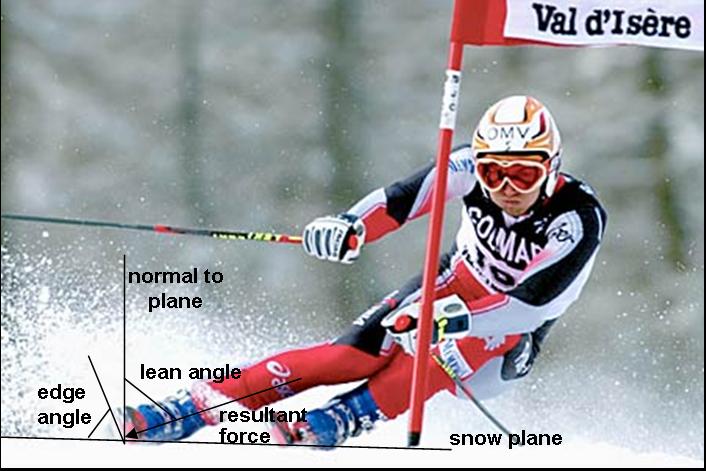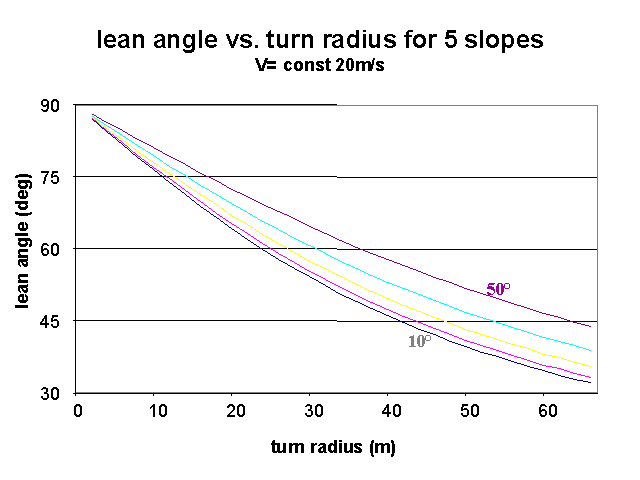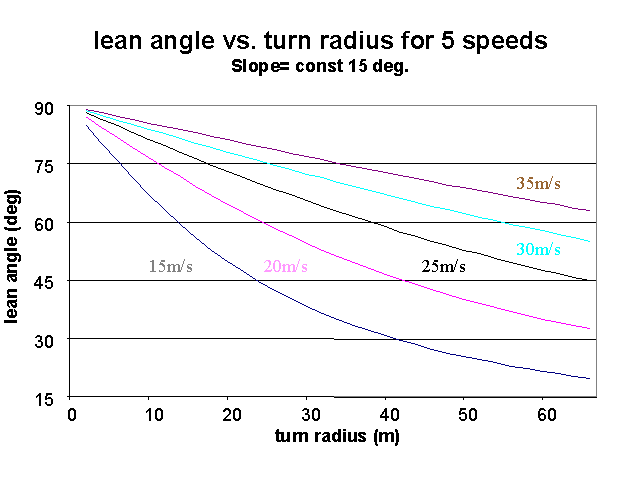 Components
of the Turn
Components
of the Turn http://ski.mountainzone.com/2001/worldcup/alpine/are/html/mgs-photo01.html
http://ski.mountainzone.com/2001/worldcup/alpine/are/html/mgs-photo01.html
The turn is a complex series of motions resulting in a change in direction. There are three main components of physics that control the radius and velocity of the turn. These three components include the lean angle, edge angle, and the resultant force, which is made up of a centripetal force and a thrust force. The lean angle is the angle measured from the normal to the snow plane to the center line of the shin coming out of the boot. The edge angle is the angle measured from the snow plane to the base of the ski. The resultant force is the total force the racer exerts on the ski. The thrust force is a force perpendicular to the snow driving the ski into the snow. The centripetal force is the force caused by the skier changing directions.

http://ski.mountainzone.com/2001/worldcup/alpine/valdisere/html/photo18.html
The lean angle can have significant effects on the turn. The lean can greatly reduce the turn radius even when skiing on steeper terrain or at higher speeds.


http://users.wpi.edu/~brown/machining/sld001.htm
The radius of the turn follows the following equation:
r=(Cd^2+(L^2/4))/(2*Cd)
Cd=sidecut/cosine(edge angle)
L is the length of the turn from the beginning of the turn to the end, not the length of the arc. Cd is the perpendicular distance from the beginning of the turn to the apex of the turn. Cd can be found from the above equation where sidecut is the difference between the width in the middle of the ski and the tip and tail. The edge angle is the only factor of the three previously mentioned that effects the turn radius. However the turn radius is linked to the centripetal acceleration (a=(v^2)/r). Centripetal acceleration is caused by the centripetal force which is determined by Merchants Metal Cutting Theory.
HOME, TURN BACK, OR MORE SPEED?
TWO ASPECTS OF DOWNHILL RACING: